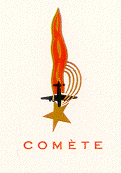

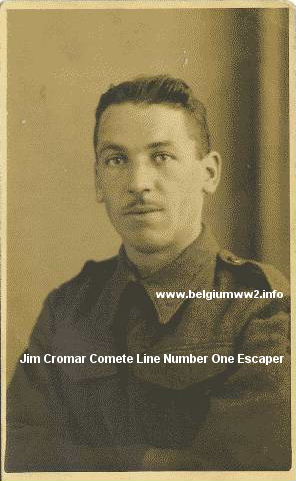 After
the soldiers had lived in Brussels for some months the group of
friends must have thought how they could get them back home to Britain.
The obvious route as a Channel crossing or air pick-up seemed too
difficult was through France, over the Pyreness and into neutral Spain.
They could then be taken to Gibraltar the British territory and naval
base in the south of the country. Already many Belgians had used this
route to escape from occupied Europe and join the British army or the
RAF. A young Belgian girl Andree
Dejongh (Dedee) who had like
Louisa Deloge had also been nursing injured British soldiers became the
means of escape for the trapped soldiers. It is interesting that she
also worked in the advertising department of the SOFINA company, Baron
Donny was a director of the company so probably they knew each other and
that's the link to the soldiers from Parike and Dedee the inspiration of the Comete Escape Line.
After
the soldiers had lived in Brussels for some months the group of
friends must have thought how they could get them back home to Britain.
The obvious route as a Channel crossing or air pick-up seemed too
difficult was through France, over the Pyreness and into neutral Spain.
They could then be taken to Gibraltar the British territory and naval
base in the south of the country. Already many Belgians had used this
route to escape from occupied Europe and join the British army or the
RAF. A young Belgian girl Andree
Dejongh (Dedee) who had like
Louisa Deloge had also been nursing injured British soldiers became the
means of escape for the trapped soldiers. It is interesting that she
also worked in the advertising department of the SOFINA company, Baron
Donny was a director of the company so probably they knew each other and
that's the link to the soldiers from Parike and Dedee the inspiration of the Comete Escape Line.
| The identity of the soldier who was the first Comete line escaper has always been a bit of a mystery to
Escape & Evasion researchers. Airey Neave calls him Colin Cromar in his book "Little Cyclone" and
Professor M.R.D. Foot & J.M. Langley in "MI9 Escape and Evasion 1939-1945" say he was called Colin Cupar and even
in the newly published "Home Run" by John Nichol & Tony Rennell he's called Colin Culpar. Colonel Remy in "Reseau
Comete" also called him Colin Cromar but Cecile Jouan's "Comete - Histoire d'une ligne d'evasion" named him as Jim Cromar which my research
at the National Archives proved to be the correct name. James CROMAR a Private in the 1st Gordon Highlanders from Aberdeen.
In 2005 I was able to trace his family and they kindly sent me the photo you see on this page for which I am very grateful to them. The family told me his surname is pronounced in Aberdeen style as Krr-Mar and he was known in his army days as "Mad Cromar". On the POW's march from St. Valery-en-Caux he tried to escape by diving into a canal, drowning, his life was saved by one of the German guards. With the difficulties with knowing his correct name and finding the family after so many years had passed I was rather proud to obtain this historic piece of Comete Line history and enable us to see the man himself. If you wish to use the photograph in any publication or website I would ask that you give credit to www.belgiumww2.info JC April 2007 |
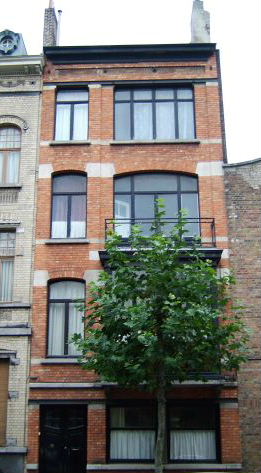
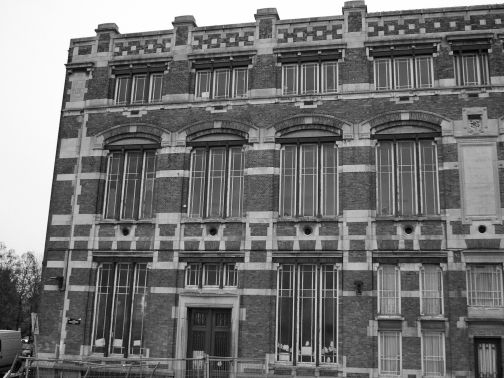
 |
| Cowan. Greig,
Madame Jeanie Wolfe, Louisa and Yvonne Deloge and friends at the Le Sanglier restaurant Boitsfort Brussels 1941 |
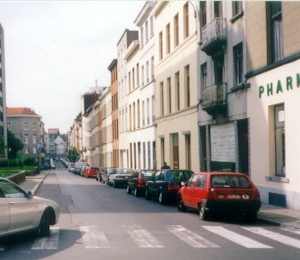
On the
25th September 1941 the Geheime Feldpolizei raided the house of Madame
Duchenne at Rue Sans-Souci Ixelles where McCUBBIN was staying. He tried
to get away but as he ran out of the house he was held by a passer-by
who thought he was a thief and shot three times by the persuing
Germans, he fell and fractured his shoulder. Madame Duchene and her
daughter Florence were arrested and taken to St. Gilles prison.
McCubbin was taken to the Belgian Military Hospital and then the
St.Pierre Hospital and later also to St.Gilles Prison.
Bobby Conville and Allan Cowan were on their way to Rue Sans-Souci from
having their passport photos taken at the Bon Marche where Yvonne
Deloge worked. As they arrived at the street, neighbours warned them
what had happened to their colleague and they were able to get away
On the
28th September or the 1st October a red headed English or Irish
infiltrator was spotted outside VANDENHOVE's house in the Rue Washington
where LANGLOIS COPLEY and the Scottish soldier AHEARN were hiding. On
the morning of the next day there was a terrific thumping on the door,
the men looked out and saw three cars, the Geheime Feldpolizei were
raiding the house.The evaders leaned out from the 3rd floor right
window to see German soldiers lining the street and heard them
attacking the front door with rifle butts. The outer door was strongly
built, it took quite an effort for the Germans to break through and
gave them time to make their escape. As the door was smashed in
LANGLOIS, COPLEY and AHEARN grabbed their clothes and rushed down to
the basement. Vandenhove had built a tunnel from the kitchen to the
main sewer in the street. Two days previously he had checked that the
exit from the sewer through a manhole in the street was free but when
the three evaders tried to lift the manhole they were unable to move
it. They were forced to stay in the sewer. Meanwhile back in the house
Vandenhove had already been arrested, their hiding place was given away
by the family dog they had befriended. The Germans shot the dog and the
airmen and soldier were trapped in the sewer for seven hours before
they had to return to the kitchen and give themselves up.
On their return to the cellar they were greeted by highly exited German guards
who poked them with their bayonets.
Richard Copley felt that poor Jean Vandenhove "aged in front of our eyes" as he
must have known what his fate would be.
The two airmen and the soldier where taken to St. Gilles Prison and put into
solitary confinement, Richard Copley wondered what would happen to him as he
had been picked up in civilian clothes. He thought he would be shot as a spy.
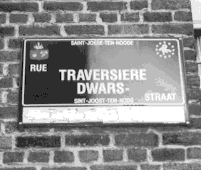
OCTOBER
1941
On 3rd October 1941 Marceline DELOGE left her home in Rue General
Capiaumont and went to enquire with the German authorities about the
whereabouts of her two missing daughters. She was arrested at the Rue
Traversiere GFP HQ, held for questioning and then taken to the main
Brussels' prison of St Gilles where her daughters were already being
held.
The arrests continued Alice de WERGIFOSSE on the fifteenth of
October,Professor Jean-Marie Derscheid at sometime in October, Welsh
Corporal
Bobby
Conville and Allan Cowan managed to avoid arrest and left Brussels for
Spain on the 14th October 1941 accompanied by Elvire de Greef (Tante
Go) as Dedee could no longer go to Brussels. Airey
Neave's
book "Little Cyclone" describes the crossing of the Franco-Belgian
border.
"At the end of September 1941,
Tante Go (Elvire de Greef) arrived in Brussels from Anglet to collect
the two men of the Highland Division, Bobby and Allan, from Paul. Her
return journey with the Scotsmen to the Belgian frontier was
uneventful, but at Quievrain station there was a disturbing incident.
The two young Scotsmen had been told to represent themselves as
Flemish. They had informed Tante Go that there was nothing in their
pockets of interest to the Customs. But on arrival at Quievrain, the
presence of a German Feldgendarme made the French officials more alert
than usual. To the horror of Tante Go, her companions were taken to an
office and searched. Allan had a large quantity of cigarettes.
Both were told to wait while the douanier disappeared, leaving them in
the office under the stolid gaze of the Feldgendarme. When his back was
turned, Bobby began to stuff the cigarettes, taken from Allan, into his
own pockets. The German, suddenly observing this, appeared highly
amused and began to laugh. To Bobby's intense surprise he was allowed
to leave with some of the cigarettes.
Allan waited dumbly in the office until the casual Feldgendarme
disappeared. Through the open door, he saw Tante Go wave in the
distance. He ran for all he was worth to join her. Then the three of
them walked hastily away.
Suddenly there was a shout behind them. The customs man who had
searched Allan was riding towards them on a bicycle, grinning broadly.
He stopped and handed over to Allan the remainder of the cigarettes".
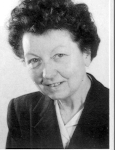
Elvire
de Greef (Tante Go)
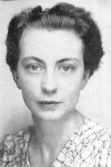
Andree
De Jongh (Dedee)
In truth the customs man kept a proportion of the cigarettes for
himself of course. One of the soldiers also made the mistake at the
border crossing of giving his British army identity papers as well as
his forged documents to the passport official. Luckily the French
official handed them back without comment.
At Valenciennes the two men were met by Andree De Jongh (Dedee), the
famous founder of the Comete escape line. They left the Zone Interdite
by crossing the Somme river near Villiers in a small boat and then
travelled on through Amiens, Paris and Bayonne. They stayed at the
"Villa Voisin" the de Greef family house at Anglet.
From Bayonne Cowan and Coville went by bus to St Jean de Luz. They
crossed the Pyrenees on foot, most probably guided by the Basque
Florentino Goikoetxea and/or "B" Johnson, arriving in San Sebastian on
the 16th October 1941.
The two Scotsmen Cowan and Conville were the second and third British
soldiers to escape along what has become known as the Comete Line. By
the end of the war more than 800 Allied servicemen had successfully
reached Spain helped by the line.
NOVEMBER 1941
Next down the line were the Polish RAF airmen Sgt. Stefan Tomicki and
Sgt. Michal Kowalski and the Canadian RAF Sgt John Ives.
Welshman Alfred JONES was arrested while playing cards on the
28th October.
Jack Newton had been separated from Langlois and Copley since the 8th
of September. He had been taken by car to a Madame DEPORQUE's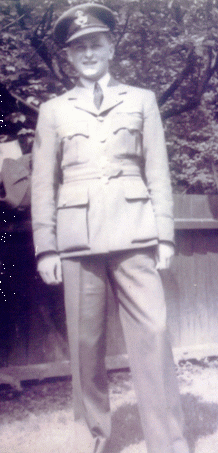 house in Brussels and after that to Waterloo outside Brussels to the
EVERARD's house where he stayed for 6 or 7 weeks until the end of
October. While he was there he met Australian Sergeant Hilary BIRK RAAF
and Canadian Sergeant Albert DAY RCAF. At the end of October Jack was
moved to nurse Mlle BECQET's house at Ixelles in Brussels. Then in late
November it was arranged that he live in a house in the Schaerbeek
district of Brussels where Birk and Day were already staying.
house in Brussels and after that to Waterloo outside Brussels to the
EVERARD's house where he stayed for 6 or 7 weeks until the end of
October. While he was there he met Australian Sergeant Hilary BIRK RAAF
and Canadian Sergeant Albert DAY RCAF. At the end of October Jack was
moved to nurse Mlle BECQET's house at Ixelles in Brussels. Then in late
November it was arranged that he live in a house in the Schaerbeek
district of Brussels where Birk and Day were already staying.
DECEMBER 1941
On the 6th of December 1941 Jack Newton and Hilary BIRK met up with
Pilot Officer Howard CARROLL (pictured left) and a Belgian Gerard
WAUQUEZ at the Brussels railway station for the journey south. Wauquez
the nephew of the head of the Belgian government in exile in London was
SOE agent "Brichamart". Gerard WAUQUEZ was on his way to London with
plans to set up a fully organised escape organisation based in Brussels
that would take escaping British servicemen to Spain and Gibraltar. The
group was taken to Valenciennes by Elvire Morelle sister of Charles
Morelle. Jack had replaced Albert Day in the group as Albert had
pneumonia. Surprisingly the officer and men divide still existed on the
jouney south so there was little communication between Carroll and
Newton. They met Dedee De Jongh at the Franco-Belgian border and she
escorted them all the way to Spain.
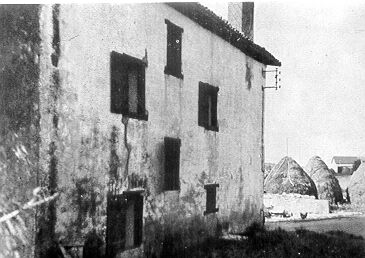
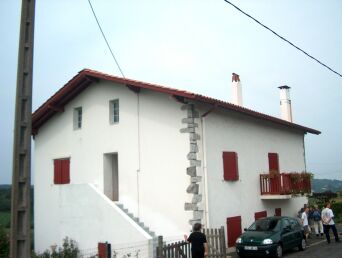
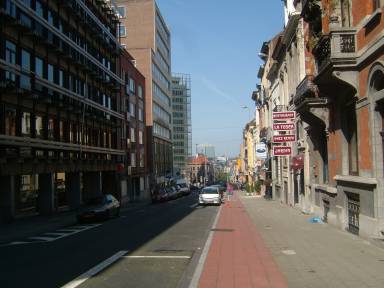 Madame Robert's house (in picture Rue Stevin today) had become a centre of the organisation, meetings
were held there, two Belgian agents Marcel Lefevre and Joseph van Hoof,
a footballer with F.C.Malinnes, who were radio operators who had
parachuted into Belgium kept their transmitter there. Mrs Roberts put
Lefevre in touch with Henri Michelli as he was due to return to
England. The group though, had been infiltrated by the German agent,
Florrie Dings. Dings of Spanish descent but assuming Irish nationality
was the mistress of Prosper De Zitter the most notorious traitor in
occupied Belgium of the whole war. Through Madame Roberts, Dings was
able to infiltrate the group. She had been trusted by Madame Roberts as
she had been able to supply neccessary clothing, papers, coupons etc.
On the day of Marcel Lefevre's departure 6th May 1942, Roberts took
Dings with her on a visit to Henri Michelli house where a meeting was
being held, this resulted in the arrest of all of them including
Charles Morelle another leader of the group and Gerard WAUQUEZ
(Brichamart) who had returned from London with Van Hoof and Lefevre.
Luckily Frederic DeJongh, Dedee's father, who had been hiding in the
house had left for Paris 6 days earlier.
Madame Robert's house (in picture Rue Stevin today) had become a centre of the organisation, meetings
were held there, two Belgian agents Marcel Lefevre and Joseph van Hoof,
a footballer with F.C.Malinnes, who were radio operators who had
parachuted into Belgium kept their transmitter there. Mrs Roberts put
Lefevre in touch with Henri Michelli as he was due to return to
England. The group though, had been infiltrated by the German agent,
Florrie Dings. Dings of Spanish descent but assuming Irish nationality
was the mistress of Prosper De Zitter the most notorious traitor in
occupied Belgium of the whole war. Through Madame Roberts, Dings was
able to infiltrate the group. She had been trusted by Madame Roberts as
she had been able to supply neccessary clothing, papers, coupons etc.
On the day of Marcel Lefevre's departure 6th May 1942, Roberts took
Dings with her on a visit to Henri Michelli house where a meeting was
being held, this resulted in the arrest of all of them including
Charles Morelle another leader of the group and Gerard WAUQUEZ
(Brichamart) who had returned from London with Van Hoof and Lefevre.
Luckily Frederic DeJongh, Dedee's father, who had been hiding in the
house had left for Paris 6 days earlier.